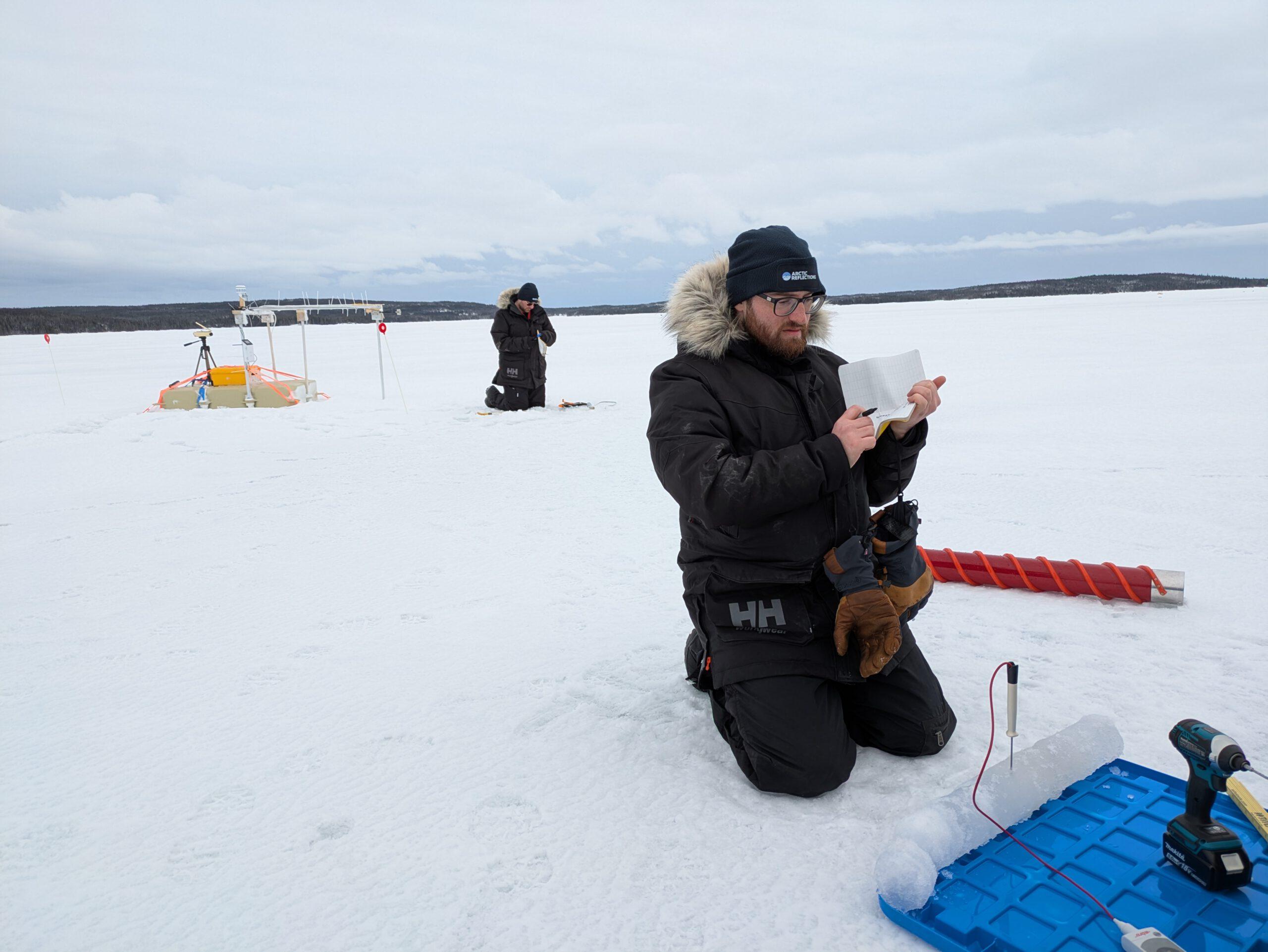In early 2025, Arctic Reflections set out for the icy coastlines of Newfoundland, Canada, to conduct our most ambitious field test yet. Designed to push the boundaries of ice-thickening research, this mission was about more than just pumps and measurements. It was about testing resilience; of our system, of our data, and of our team.
Why We Went Bigger This Time
Building on insights from our earlier test in Svalbard, this year’s objective was to operate on a somewhat larger scale. We used higher-capacity pumps (over three times the flow rate of our previous setup), giving us the ability to cover a larger area. This allowed us to examine how much ice can realistically be thickened from one pumping location, a crucial step toward understanding future scalability.
To support this larger operation, we developed a new trailer-based pumping & augering system, developed in collaboration with Dutch companies TWD, Metazet and Hefcom and Swedish company EMV, and assembled together with talented local mechanics close to our test site. A lifting and sliding platform, towed by a Fat Truck amphibious vehicle, helped make this expanded field test possible.
Challenges from Snow, Wind, and -30°C Days
Fieldwork in the sub-Arctic is never predictable. We faced high winds, snowfalls (and even unexpected rainfall!), mechanical hiccups, and temperatures dropping to -30°C. One of the key insights from this test? Snow matters; a lot.
Flooding snow can accelerate natural freezing by lowering its insulating effect, but conversely we also learned that heavy snowfall after pumping can act as an insulator that actually slows down the refreezing process. Snow distribution on the ice, including the formation of sastrugis, influenced how far and fast water could spread. These findings help us better select suitable sites and adapt our methods to local conditions.
Innovating While Standing Still (in the Snow)
Not everything went according to plan, as it rarely does in fieldwork. But through quick collaboration with local partners, we overcame issues on the ground. When our automatic auger system didn’t perform as expected, local mechanics helped us improve the design, saving time and energy on ice.
Our custom-built, floatable measurement platforms were another key component. Equipped with thermistor chains, weather stations, radiometers, and timelapse cameras, these systems will allow us to track the ice’s behavior all the way through the melt season.
What Comes Next?
The field test may be over, but the analysis has only just begun. From tracking reflectivity and thickness of the ice remotely, to interpreting temperature data and drone camera footage, we now shift our focus to uncovering what all this means.
Already, we see the complex interplay of snow, weather, and engineering in shaping outcomes. With the most comprehensive dataset we’ve collected to date, we’re better positioned than ever to understand the potential of ice thickening as a tool to slow Arctic ice loss.
Stay tuned as we translate these lessons into insights, and into action.
For more updates, follow us on LinkedIn!

